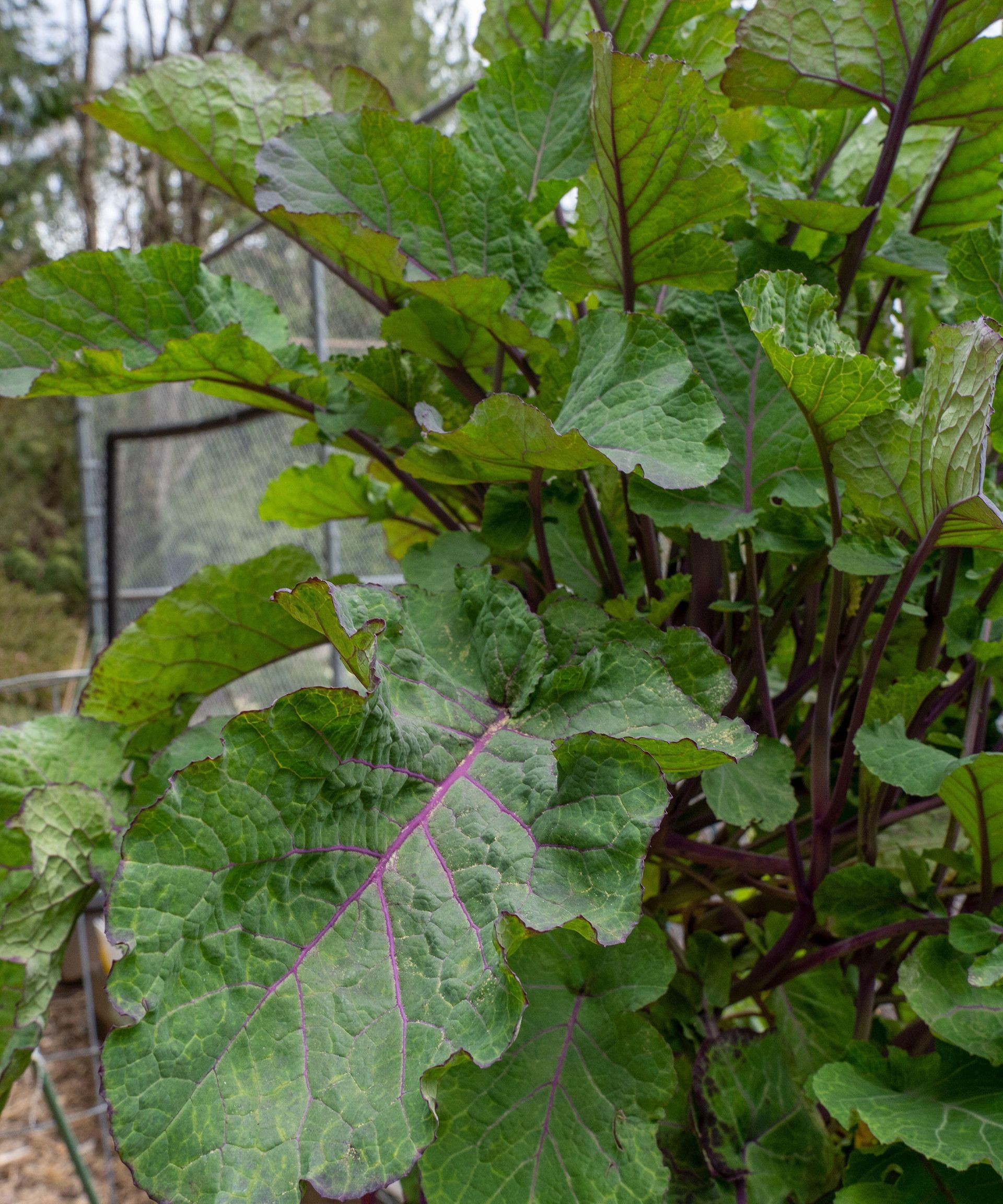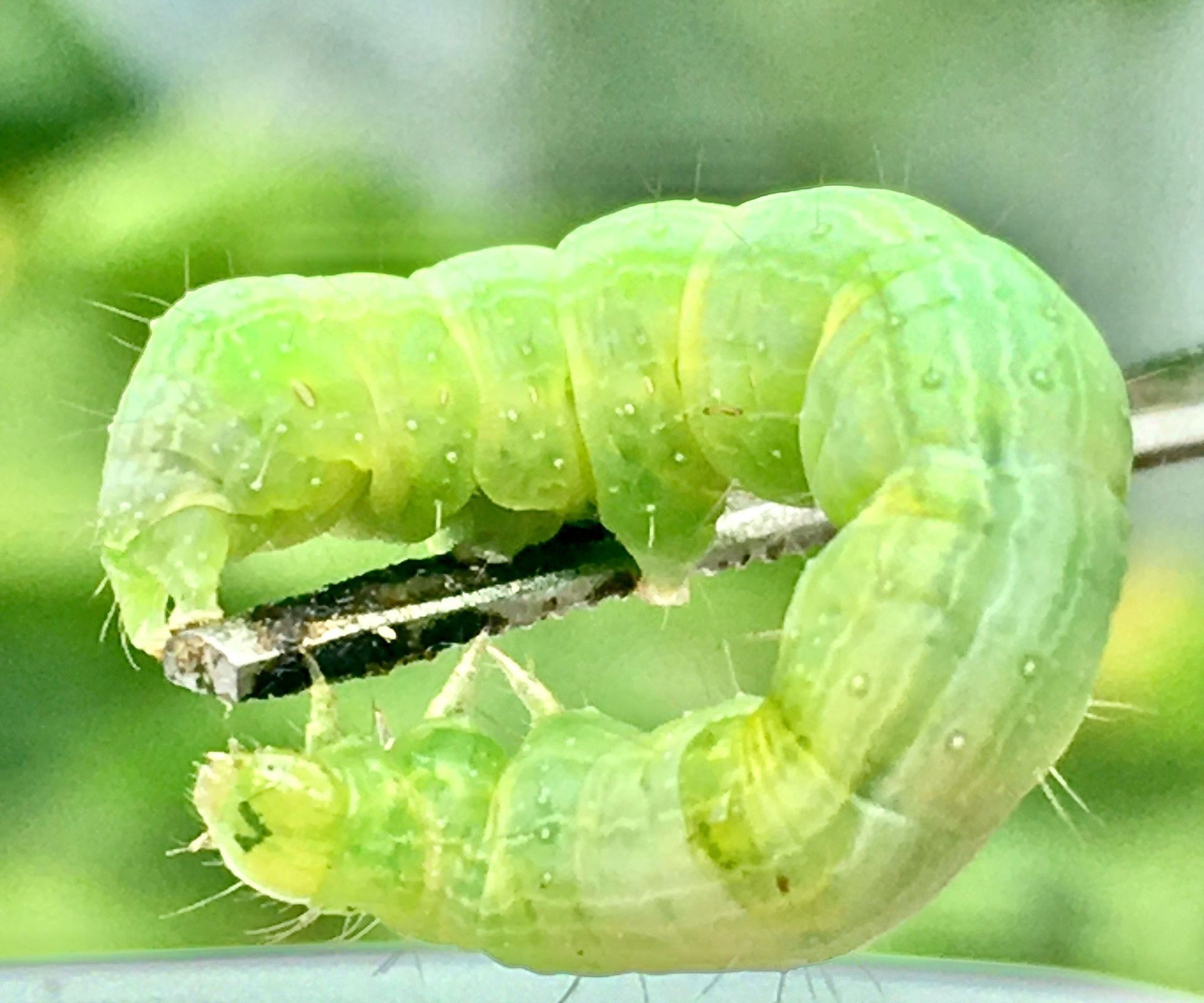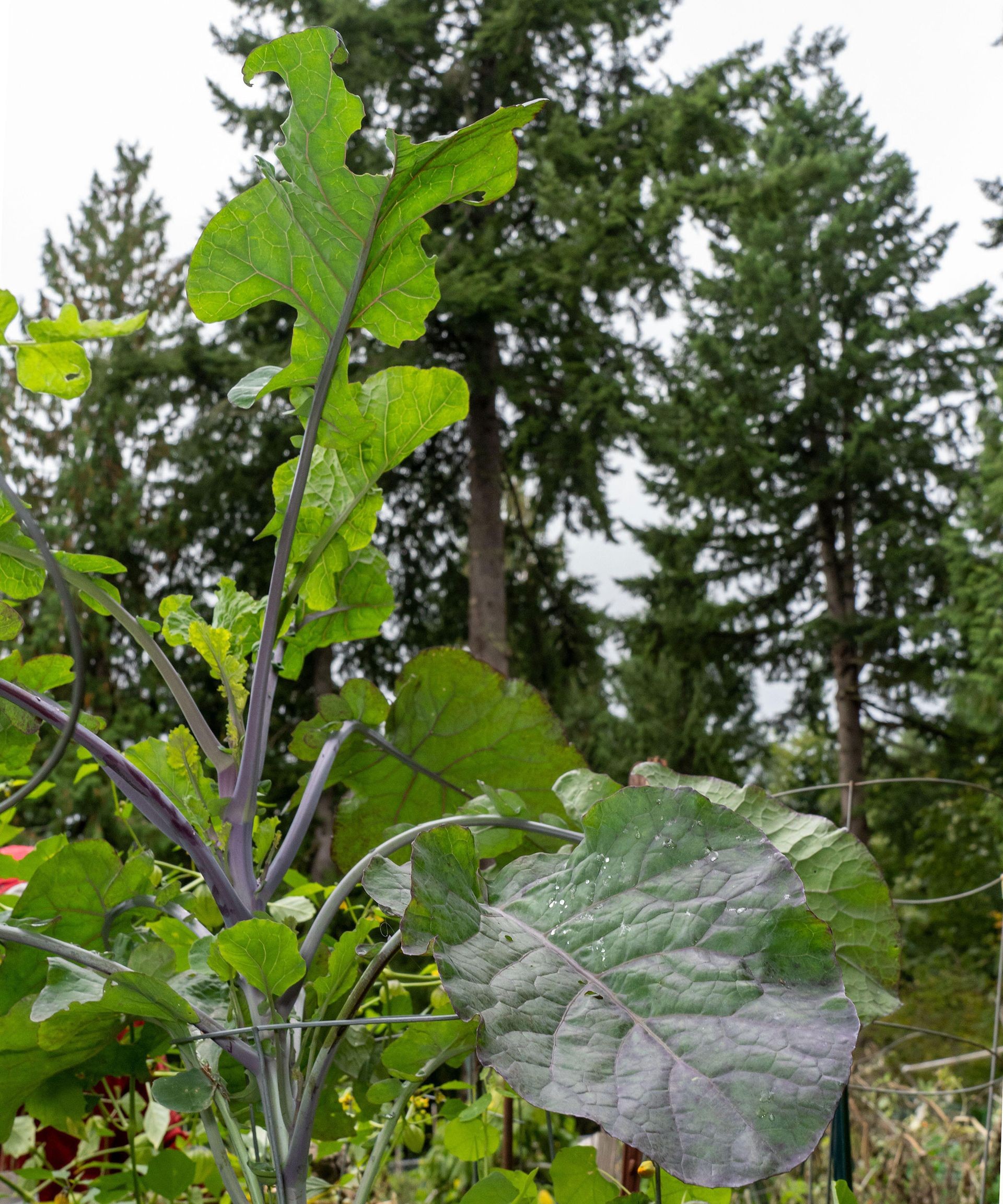No products in the cart.
NEWS
Growing Tree Collards: Your Guide to This Perennial Garden Gem
For gardeners seeking productive, low-maintenance plants, tree collards offer a fantastic solution. Unlike their annual relatives, these remarkable brassicas behave more like shrubs, providing a continuous harvest of nutritious greens for years. Known by several names including perennial kale or tree kale, this plant brings the robust flavor profile of collards, kale, and cabbage into a single, long-lived package, making them a true gem in any edible landscape.
Here are some key facts about this unique plant:
- Botanical Name: Brassica oleracea acephala
- Height: Can reach up to 12 feet (3.66m)
- Spread: Up to 5 feet (1.5m)
- Sun Requirements: Full sun to partial shade
- Soil: Prefers well-draining soil, but adaptable
- Hardiness Zones: USDA 5-11, depending on the specific variety
- Planting Time: Spring is ideal
Tree collards belong to the Brassica oleracea species, the same wild cabbage lineage that gave rise to broccoli, cauliflower, kale, and traditional collard greens. Specifically, they are a form of the acephala subspecies. What sets them apart is their ability to persist for several years, acting as a perennial or at least a partial perennial in suitable climates. This longevity earns them the nickname “perpetual kale.” While their taste is often described as closer to kale, they carry distinct notes of cabbage and a subtle peppery finish reminiscent of collards. With minimal protection, even gardeners in cooler regions can enjoy them for multiple seasons, and in milder climates, a single plant might produce for two decades or more.
 Vibrant green tree collard plants thriving in a home vegetable garden bed, showing their upright growth habit
Vibrant green tree collard plants thriving in a home vegetable garden bed, showing their upright growth habit
Essential Care for Thriving Tree Collards
As a member of the large Brassica family, perpetual kale shares some common needs with its relatives, but its perennial nature and unique growth habit require specific attention for optimal health and productivity.
Ideal Lighting
While these plants can tolerate full sun, especially in northern climates, they often perform best and produce more tender, flavorful leaves when given some relief from intense afternoon sun. Dappled shade or a location that receives full sun in the morning and shade later in the day is particularly beneficial in hotter regions.
Watering Needs
Tree collards have moderate watering requirements, particularly when grown in rich, fertile soil. Ensuring consistent moisture, without waterlogging, is key. Interestingly, in low-moisture conditions, the plant has a natural adaptation: it can develop a powdery coating on its leaves, which helps reflect light and reduce moisture loss through transpiration.
Temperature & Humidity Tolerance
These adaptable plants are quite tolerant of a wide range of conditions. They thrive in areas with high humidity but can also adjust to more arid environments. Temperature tolerance varies by variety; some can withstand temperatures as low as 14°F (-10°C), while others are more sensitive and may perish below 30°F (-1°C). Certain varieties can even endure summer temperatures climbing into the triple digits (over 100°F or 38°C).
Soil Preferences
Tree collards are remarkably unfussy about soil type and can grow in almost any ground. However, to achieve the most vigorous growth and best-tasting leaves, plant them in soil that is well-draining and rich in nutrients. Even heavy clay can support them, but amending the soil for better drainage is always a good practice. While slightly acidic soil is tolerated, applying lime several months before planting can improve leaf flavor.
Fertilization
If planted in fertile soil, tree collards require minimal supplemental feeding. In less nutrient-rich conditions, an annual side-dressing of organic matter like well-rotted manure or compost is highly beneficial. Additionally, providing a calcium supplement annually, such as ground oyster shells or chicken eggshells mixed into the soil around the base, is recommended to support strong growth.
Addressing Common Issues
Like all garden plants, tree collards can face challenges from pests and diseases.
Pests and Diseases
Poor drainage in heavy soils can lead to root rot, a common issue for many plants. As brassicas, they are susceptible to the cabbage looper, the larval stage of the cabbage butterfly. These voracious caterpillars can cause significant damage by feeding on the leaves. Hand-picking is an effective organic control method, as is applying a biological insecticide containing Bacillus thuringiensis (Bt), which specifically targets caterpillars. Smaller animals like mice or rabbits may also occasionally nibble on the lower leaves.
 Close-up view of a green cabbage looper caterpillar eating a brassica leaf, showing common garden pest damage
Close-up view of a green cabbage looper caterpillar eating a brassica leaf, showing common garden pest damage
Maintenance: Pruning and Repotting
To maintain a bushy, productive plant rather than a tall, spindly one, regular pruning is essential. Trim stems back to the point where a leaf meets the main stem (a leaf axil). This encourages the plant to branch out, resulting in more leaves. Pruning every few months helps keep the plant compact and maximizes yield.
If growing tree collards in containers, they will benefit from repotting every one to two years. This involves replacing the old potting mix with fresh, nutrient-rich soil. When transplanting, gently loosen the roots if they are coiled and trim away any that appear discolored or damaged. Staking container-grown plants can provide necessary support as they grow taller.
Multiplying Your Plants: Propagation
One of the great benefits of tree collards is how easily they can be propagated from cuttings, allowing you to expand your patch or share plants with others. Simply take a stem cutting from either the main stalk or a side shoot. Aim for a piece approximately 12 inches (30 cm) long and about 1 inch (2.54 cm) in diameter at the tip. Remove all but the top two or three leaves to reduce moisture loss. Plant the cutting vertically in moist, well-draining soil, ensuring about one-third of the cutting is below the soil surface. Keep the soil consistently moist but not soggy. Roots typically form within about six weeks.
Harvesting Your Perpetual Greens
Tree collard leaves can be harvested continuously throughout the growing season and into winter in milder climates. The youngest leaves at the tips tend to be the sweetest and most tender, ideal for fresh use. However, all leaves are edible and nutritious. To ensure the plant remains healthy and productive, never remove more than one-third of the foliage at a time.
Young, tender leaves are excellent used raw in salads. Older, larger leaves are best cooked. They hold up well in soups and stews, can be sautéed like spinach or kale, or used anywhere you would use traditional cabbage or collard greens. Their sturdy texture even makes them suitable for steaming and using as wraps for other foods. Harvested leaves can be stored in a plastic bag in the refrigerator’s crisper drawer for several days.
 Striking purple tree collard plant growing vertically in an edible garden, highlighting its unique color mutation
Striking purple tree collard plant growing vertically in an edible garden, highlighting its unique color mutation
Exploring Tree Collard Varieties
The world of tree collards includes several distinct and interesting varieties, each with its own characteristics:
- Purple Tree Collard: Visually striking, this variety deepens in purple color during cooler weather. Its flavor is often considered best in the cool season. These plants can reach impressive heights, potentially up to 12 feet (3.66m) in ideal conditions.
- Taunton Deane Kale: An older, esteemed variety originating from England in the 1850s. It features silvery-green leaves with contrasting purple veins, often growing up to eight inches (20cm) long.
- Merritt Tree Collard: This type resulted from a natural cross and is known for its exceptionally long leaves, sometimes reaching two feet (.61m). It forms dense, bushy plants that can grow up to seven feet (2m) tall.
- Dino Tree Kale: A natural hybrid of the purple tree collard and dinosaur kale. While most tree collards flower infrequently, this variety tends to flower more often. The young flower shoots are edible and resemble small broccoli.
- Jolly Green Tree Collard: A tall-growing variety, potentially reaching 10 feet (3m). Its leaves are flatter and possess a milder flavor compared to some other types.
- Big Blue Tree Collard: Introduced relatively recently in 2020. This is a smaller variety, typically growing only to about three feet (.91m). It has attractive crinkly blue-green leaves with slightly purple stems.
- Daubenton Kale Panache: A variegated cultivar, meaning its leaves have patches or streaks of different colors. This variety forms a smaller, more compact bush but can be difficult to find.
- Michigan Tree Collard: Notable for its cold hardiness, rated for USDA zones 5-6, making it suitable for colder climates than most other tree collards. The leaves are silver with purple tints on young leaves and stems. Even if the top growth appears to die back in winter, it often regrows from the base in spring.
Frequently Asked Questions
Are Tree Collards the Same as Collard Greens?
Tree collards and traditional collard greens are both members of the same Brassica oleracea species, specifically within the acephala subspecies group (which includes kale and collards). However, tree collards are typically hybrids or specific cultivars selected for their perennial growth habit and often larger, more upright structure, differentiating them from the generally annual or biennial cultivation of standard collard greens.
What do Tree Collards Taste Like?
The flavor is a blend that combines elements of collard greens, kale, and cabbage. It’s generally described as earthy with some bitterness, often becoming sweeter after a light frost. The taste profile can vary slightly between different varieties and is influenced by growing conditions and the time of year harvested, with cooler temperatures often enhancing sweetness.
Cultivating tree collards offers a unique and rewarding experience for any gardener. Their ease of care, perennial nature, and continuous supply of nutritious greens make them a valuable addition to the home garden. Explore the possibilities and enjoy this perpetual powerhouse of flavor and nutrition. For more expert gardening advice and resources to support your plants, visit Biogarden.Asia.



